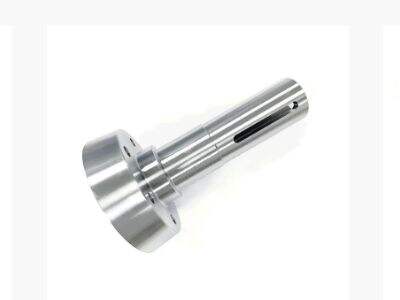Robotic Performance Is Enhanced by Polished Surface Treatments
Surface treatment is the key to improve the function of the robot. Robots work their best when they are using flat surfaces to effectively and precisely move in most industrial applications. The sum of all that can be any of the following, depending on robotic capabilities: from various motion precisions to successful movements, smooth surfaces play an important role in robotics so in this article we take a look at the effects of smooth surface treatments to robotics, discuss their significance and explore their importance for both robotic components and systems.
How Smoother Surface Treatments Are Enhancing the Performance of Robots?
Promoting smooth surface treatments represents a must for enhancing functionalities of robotic systems. “There’s less friction and you get less resistance when the surface is smooth, so the robots are much more efficient and accurate,” Shapiro says. Smooth robotic components lead to less abrasion, meaning that life and efficiency of the devices are enhanced. The smooth surfaces also ease the working of various parts of the robot which helps better perform the operation and increase the overall performance. By investing in effective surface finishing, manufacturers can maximise the capability of their robot cnc machine parts, ensuring a reliable and efficient product for industrial applications.
Effect of Smooth Surface on Accuracy of Robot
The accuracy of robot movements is affected directly by the smoothness of the surface. Crawling robots with smooth surface can realize more stable and uniform motion performance, resulting in improved accuracy for completing tasks. It is important for a robot to make accurate movements in appropriate directions for example lifting up and down, sliding left and right and so on, whether picking and placing objects or moving through complicated spaces.
The importance of smooth surface treatments for robotic parts
Smoothing treatments are essential to robotic components, since the relevant surface finish can affect their performance and usability. Robots can experience friction, drag and uneven movements if operating in non-smooth surfaces, which in turn can effect their efficiency and accuracy. The use of smooth finishes for robotic parts can help robotic manufacturers get the most out of their robotic systems by facilitating performance, longevity and accuracy. Sleek surfaces have the advantage of minimizing the wear and tear on robot components resulting in less maintenance and higher performance. Smooth surface finishing is, in fact, an important element in achieving robotic lathe machining parts reliability and performance in different industrial applications.
Multiple Benefits of Smooth Surface for Robotic Parts
Robotic parts and others benefit in many ways from smooth surfaces. Robotic parts move faster and more smoothly with smoother surfaces, so there is less downtime and more output. Furthermore, there is no risk of wear or corrosion from friction on their smooth surfaces, ensuring the longevity of robot cnc lathe machining parts and the minimum amount of maintenance and replacement work. Moreover smooth surfaces allow robots to move more accurately and precisely, which is necessary for surgery applications. Clearly, the advantages of smooth surfaces in robot components will improve their performance, reliability, and economy in industrial applications.
The Importance of Roughness of Surfaces in Robots
Smooth contact conditions are very important for robots’ overall performances and efficiencies. From these improvements to functionality, accuracy, longevity and reliability, the smooth surface is key to the smoothing operation of robots operating in various industrial environments.
Table of Contents
- Robotic Performance Is Enhanced by Polished Surface Treatments
- How Smoother Surface Treatments Are Enhancing the Performance of Robots?
- Effect of Smooth Surface on Accuracy of Robot
- The importance of smooth surface treatments for robotic parts
- Multiple Benefits of Smooth Surface for Robotic Parts
- The Importance of Roughness of Surfaces in Robots

 AR
AR
 BG
BG
 HR
HR
 CS
CS
 DA
DA
 NL
NL
 FI
FI
 FR
FR
 DE
DE
 EL
EL
 IT
IT
 JA
JA
 KO
KO
 NO
NO
 PL
PL
 PT
PT
 RO
RO
 RU
RU
 ES
ES
 SV
SV
 TL
TL
 LT
LT
 SK
SK
 SL
SL
 UK
UK
 HU
HU
 TH
TH
 TR
TR
 GA
GA

